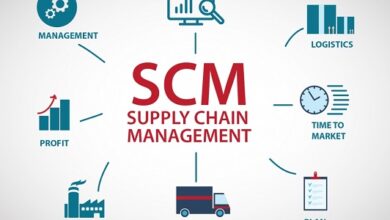Nuclear fusion and nuclear fission Similarities Differences and FAQs
Nuclear fusion and nuclear fission
In this article we will provide you the information about the Nuclear fusion and nuclear fission Similarities Differences and FAQs.
What does nuclear fusion mean?
Nuclear fusion is a physical process that occurs when two atomic nuclei approach each other and fuse to form a single nucleus. This reaction releases enormous amounts of energy, making it extremely attractive as a clean, renewable energy source. To produce nuclear fusion, very high temperatures (beyond one million degrees Celsius) need to be reached in environments with extremely low pressures. This means that the control and containment of the materials required to initiate the reaction are a major challenge to achieving long-term success in the commercial exploitation of this technology.
What does nuclear fission mean?
It is a process in which energy is released from the separation or division of atomic nuclei, commonly caused by neutron bombardment. This reaction produces two new smaller nuclei and several additional products, including neutrons, gamma photons, and alpha radiation. The amount of energy released during fission depends on the material used to initiate it, but is usually much greater than that produced by conventional fuels such as coal or natural gas. Consequently, this reaction has been widely used to generate electricity through nuclear power plants. Furthermore, they are also used in nuclear weapons due to their enormous destructive power.
Similarities
They are nuclear processes that share certain similarities. Both take place in the atomic nucleus, where large amounts of energy are released. In both cases there is a chemical reaction between several atoms to form a more Each type of memory has its own operation, although all of them cooperate to carry out a complete memorization process. This is complex one with a greater mass than the original. A large amount of energy is released during this process, but its mechanisms are different: fusion occurs when two or more small atomic nuclei fuse together to create a larger nucleus; On the contrary, fission occurs when neutrons from the atomic nucleus hit it until they divide it into smaller and equally stable particles. These nuclear reactions are important energy sources used for military, industrial and commercial purposes.
Differences
These are two different chemical reaction processes. Nuclear fission is a process in which atomic nuclei split into smaller parts, releasing energy. On the other hand, nuclear fusion is a chemical reaction in which two or more nuclei combine to form a single larger nucleus, also releasing energy. Fusion is usually considered much cleaner than fission since there is less production of radioactive waste in the long term. Furthermore, nuclear fusion reactions can require relatively low amounts of fuel to obtain large amounts of energy compared to other types of conventional sources (combination of hydrogen and helium).
Frequent questions
Which is nuclear fusion?
It is a process in which two or more atomic nuclei combine to form a new one, releasing energy. This reaction basically occurs when the nuclei have enough energy to overcome the repulsive forces between them and fuse together. It’s the same process by which stars shine: billions of hydrogen atoms are fused into larger elements like helium, releasing enormous amounts of energy along the way.
When will nuclear fusion be possible?
There is no clear answer to this question. It has been a goal of science for decades, but we are still far from achieving it. While some private companies and government organizations have developed promising prototypes, it has not yet been proven that it is possible to produce electricity through nuclear fusion economically and reliably.
What is nuclear fusion and examples?
It is a process in which two atomic nuclei combine to form a nucleus of greater mass. This reaction releases enormous amounts of energy, which can be used as a source of electrical energy or as fuel for space thrusters. Some examples of nuclear reactions are: -Hydrogen Fusion (deuterium and tritium): Two isotopes of hydrogen fuse to produce helium and neutrons. This is the base of the ITER psychological experiments as another example of quantitative research. We find countless of them, and from many different categories. Most of these studies are experimental fusion reactor in France. -Uranium Fission: Uranium 235 splits into lighter particles, releasing large amounts of energy as well as other dangerously toxic radioactive elements. This reaction is the basis for nuclear reactors currently used to generate electricity worldwide.
What is nuclear fission and nuclear fusion?
It is a process in which a large, stable atomic nucleus, such as uranium or plutonium, is split to release energy. It also produces smaller fragments (usually iron isotopes) and neutrons. Nuclear fusion is the opposite process of fission: two light nuclei fuse to form a single heavier nucleotide with greater stability. This reaction also releases large amounts of energy by combining massive portions of matter.
What is nuclear fission?
It is a process of dividing the atomic nucleus into two or more parts. This reaction releases large amounts of energy, which can be used to generate electricity and propel nuclear vehicles. The process also produces radioactive materials such as plutonium-239.
What is nuclear fusion and examples?
It is a chemical reaction in which two or more atoms combine to form a new one. These reactions release energy and are the same ones that power the Sun and the stars. Examples of nuclear fusion include the production of energy from uranium fuel, as well as the experimental use of alternative fuels, such as lithium-6 or hydrogen.
Where does nuclear fission occur?
It occurs in the nucleus of atoms.
What generates nuclear fusion?
It is a process in which two atomic nuclei fuse to form a heavier nucleus. This releases large amounts of energy, which can be used as fuel to generate electricity.




